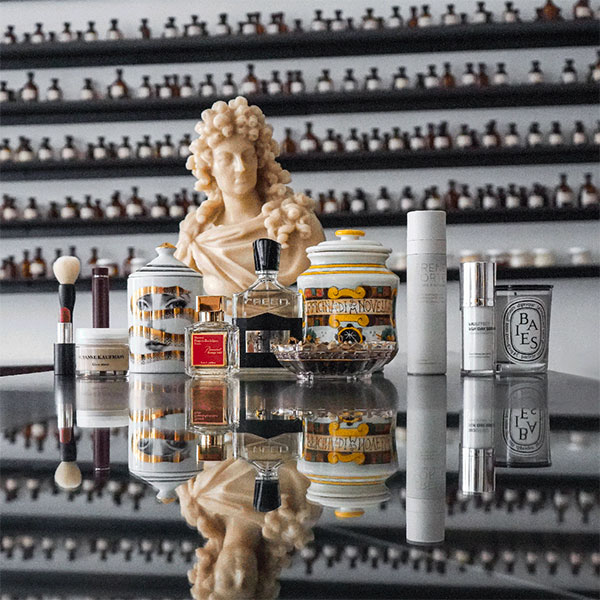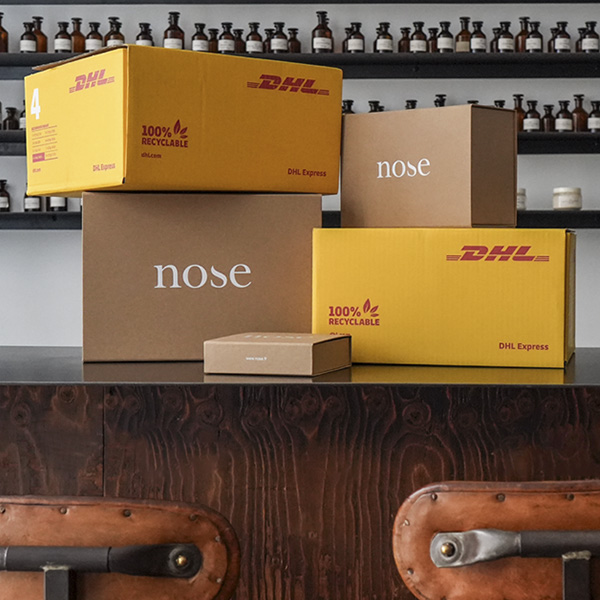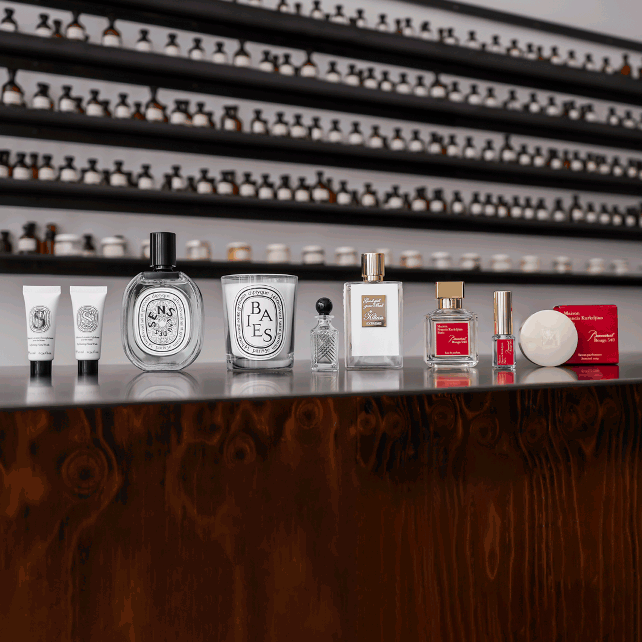
100% authentic products & official reseller for :
creed, maison francis kurkdjian, kilian paris, marc antoine barrois
You have a question? Please consult the Frequent Asqued Questions (FAQ).
If you don't find your answer, please contact us:
by email: info@noseparis.com
by phone: +33 1 86 47 72 76
Nose ship perfume by international airfreight and by La Poste for the services Colissimo Expert and Chronopost Classic to more than 75 countries.
To know more, please consult the Frequent Asked Questions (FAQ)
To know more about returns and refunds, please consult Terms and Conditions of Sales, section 6 Right to and period of withdrawal.
Nose proposes an olfactive diagnosis where 5 perfumes will be proposed among a list of 500 curated ones.
Do the diagnosisNose proposes an olfactive diagnosis where 5 perfumes will be proposed among a list of 500 curated ones.
Do the diagnosisWith his talent and originality, Bruno was able to bridge the gap between the American dream and the myth of French perfumery. He feels so intimately linked with them that he can work out each step of their maturation and anticipate their final olfactive form. As intellectual in his creation as he is an artist at heart, he advocates Kant’s philosophy that “beauty is universal and has no concept.”
What is your motto?
Less is more. Go simple and avoid the frills. The creation of a perfume must be simple, although it is often long because everything must be perfectly balanced. I do not like to use too many bases and I prefer to limit the number of raw materials, as it is done in painting or interior design. This has also become my signature in perfumes: a simple and clear message that can be identified immediately.
Your oldest olfactory memory?
The hairdresser of my mother, dressed in blue velvet, stuffed with several fragrances: Caleche, Rive Gauche, Cabochard. From an olfactory point of view, they are chypre or floral aldehydes and they still correspond to my definition of femininity. When my mother went to work and I felt lonely, those olfactory memories were the only way to feel close to her.
What was your mentor (at IFF?) Or which teacher has the most marked you at ISIPCA?
Dominique Ropion, my formulation teacher at ISIPCA. I was his best student! At least that's what he tells his students, but maybe there's a little truth in it ... When I arrived in New York at IFF, I was working right next to Sophia Grossman's office, a well-known American perfumer with Russian origins. She created the famous purple rose that changed the 80s and the Dawny (a fabric softener); she also co-signed Beau by Estée Lauder and later created Paris by Yves Saint Laurent, Eternity by Calvin Klein, and Trésor by Lancôme. Imagine being a painter and being placed right next to Picasso!
What are your favorite raw materials? Why?
I like all the materials, but especially the patchouli, for its terrestrial (earthy side) yet extraterrestrial (a very aerial accord composed of a rising note of patchoulol and camphoric notes) character. Moreover, patchouli is the ingredient which is most often preferred by perfumers because of its timeless nature.
You have lived in the USA for a long time. Is there a difference between niche perfumes' creation in the US compared to Paris?
Creative processes are not really different, as many brands, even those based in the US, are run by Europeans. I notice that many brand owners (such as Kilian Hennessy, Frederic Malle, Eddie Roschi and Fabrice Penot) with an entrepreneurial mentality are based in the US, where they have set up their own outpost.
What is your interpretation of "Monsieur." By Editions de Parfums Frédéric Malle? Why is this chypre fragrance unique? How was the creation process with Frédéric?
The name comes from the fact that Frederic always called me "Monsieur". I invited him to imagine his own patchouli, and that's how he designed this very leathery fragrance, with more than 52% patchouli, my favorite material. A duo aiming at mutual emulation, a win-win process. More than a chypre, it's an ode to patchouli. The touch of rum adds a masculine side, very British, reminding of old London gentlemen clubs.
And of Dries Van Noten? How is this oriental so unique? How was the creative process with Frédéric and Dries?
It is a "Flemish oriental", inspired by the personality, provenance and sensitivity of Dries. Every time Frédéric went to see Dries, he was always welcomed with Flemish sweets: notes of cloves and cinnamon, and traces of ginger. A very cozy and warm atmosphere. It was necessary to add a wood with soft, creamy and luxurious notes to give it more body: we chose the sandalwood. A six-handed work, a collaboration mixing the language of perfume with that of fashion.

100% authentic products & official reseller for :
creed, maison francis kurkdjian, kilian paris, marc antoine barrois

no custom, nor clearance and VAT-free under $800
free express DHL delivery from Paris to New York, Los Angeles, Chicago, or Miami
within 2-3 working days for any order above €167 (before VAT) / $175
(all information here)

French (euros) prices (likely among the most competitive)
3 free samples with orders from 80€ and 6 from 160€
+500 gifts available with purchases across 80% of our brands